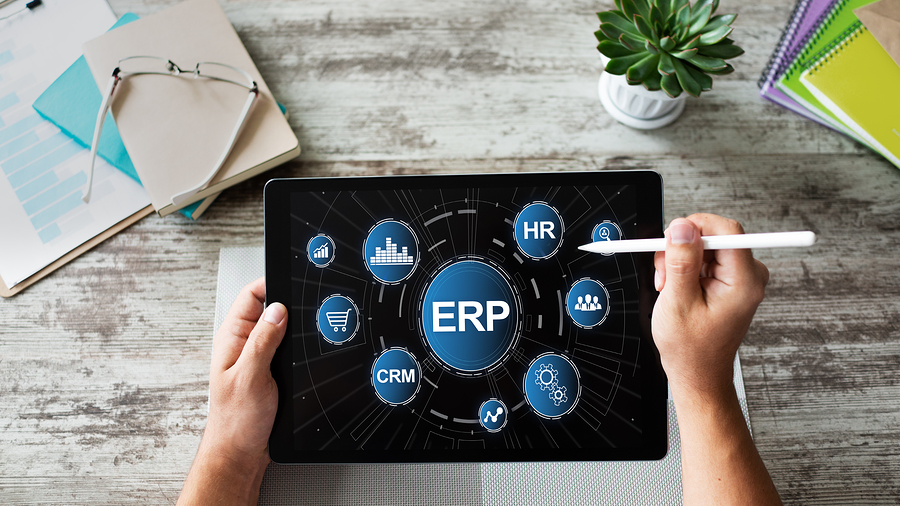Keeping business running as normally as possible looks a lot different right now than it did earlier in the year. Many companies have rolled back on spending, but others are realizing in this crisis that it’s long past time to update or change their ERP solution, and some might be discovering that it’s time to add one in the first place.
There’s variance in how long experts say an ERP lifespan should be. Some say as few as five years, while others quote closer to 7-10 years. The ideal replacement period will vary from company to company, depending on business environment and growth. Something like the COVID-19 pandemic may make a business realize that it is definitely time to move to a cloud-based ERP that can be accessed remotely.
There are many things to consider as you search for the best ERP solution for your business, such as cost, implementation, training, support, and functionality. These six criteria should definitely be brought up as you take a closer look at your options.
6 Criteria to Look for in Your New ERP
You probably have a checklist in mind already for your company’s new ERP system. Perhaps you need it to work with a specific spreadsheet program, or you’re looking for a cloud-based system. Be sure to add the following six suggested criteria to your list to ensure that your new ERP system meets your company’s needs.
- User experience: User experience refers to the ease of navigation, appearance, and ability to personalize the system. Many vendors claim they’ve designed “beautiful” systems, but what’s beautiful to one may be distracting to another. Focus on how well the navigation and ease of use meets your company’s needs. Consider creating a small team of a few people from different parts of the company and different job functions which will interact with the software daily to “test drive” the user experience and provide detailed feedback for comparison as you’re reviewing different systems.
- Industry-specific features: “Fit and functionality” are the buzzwords when examining industry-specific features. This is perhaps the most important component of software evaluation. How well does the software work for your industry-specific needs? In the past, it was acceptable to make concessions to get the best features even if the software didn’t completely fit your company’s needs. Today, however, many software packages offer flexibility to mix and match features. Others, like Acumatica ERP, encourage third-party vendors to create add-ons so their base ERP communicates quickly with productivity packages, ecommerce software, and other software. Before meeting with ERP vendors, make a list of the industry-specific features you need. If you don’t see them at first glance, talk to the reseller about what’s required. It might be a simple API or a more complex connection to ensure you have the exact functions you need for your industry and company.
- Single end-to-end solution: As with fit and functionality, it’s essential your ERP system offers complete end-to-end coverage for all functions you need. This isn’t an area to make big concessions, or you’ll end up paying more for additional products to fill the gaps.
- Affordability: Take a good look at the price tag for any ERP solution as well as any possible hidden fees. Read all the contracts and fine print. Some ERP solutions have hidden fees or even lock your data until you pay a fee if you want to change vendors at a later date. Cloud-based solutions can be very affordable but may not be the best fit for all companies. Run cost-benefit analysis for all software choices and weigh the pros and cons of each pricing plan before choosing one for your company.
- Integration capabilities: Some ERP companies lock you into using only their own branded line of products, while others encourage open APIs and shared code so third-party vendors can build out integrations. If integration isn’t relevant to you now, reconsider. It may become a vital business necessity next year. It’s always better to have options when it comes to choosing new software for your company.
- Reporting and analytics: Ask to see samples of the built-in reporting and analytics in the ERP systems under consideration. Can they be customized by role or by user? The basic reports found within the ERP might be the ones you will rely on for a while. Make sure they are useful and cover what you need and use the most.
Shopping for an ERP is a detailed process, but these criteria will help you review the various software options to find the best solution for your organization’s needs. Take a look at this Mint Jutras report provided by Acumatica to learn more.
Consider Acumatica ERP With ASI
As you’re searching, consider that Acumatica ERP offers a powerful solution for small to mid-sized companies. Their open platform enables many third-party vendors to create useful apps and extensions that bridge systems between Acumatica and productivity software, for instance, that creates a flexible, integrated solution that meets your business needs. Additionally, Acumatica Cloud lets users do business from anywhere in the world, including their couch.
Ready to see if Acumatica is the right fit for you? ASI is ready to help you make the best decision to keep your business moving forward both now and long into the future. Contact us now to get started.

